 by "ttyymmnn" (ttyymmnn)
by "ttyymmnn" (ttyymmnn)
Published 06/02/2017 at 12:35
 by "ttyymmnn" (ttyymmnn)
by "ttyymmnn" (ttyymmnn)
Published 06/02/2017 at 12:35
Tags: Planelopnik
; planelopnik history
STARS: 9
Welcome to This Date in Aviation History , getting you caught up on milestones, important historical events and people in aviation from May 31 through June 2.
!!! UNKNOWN CONTENT TYPE !!!
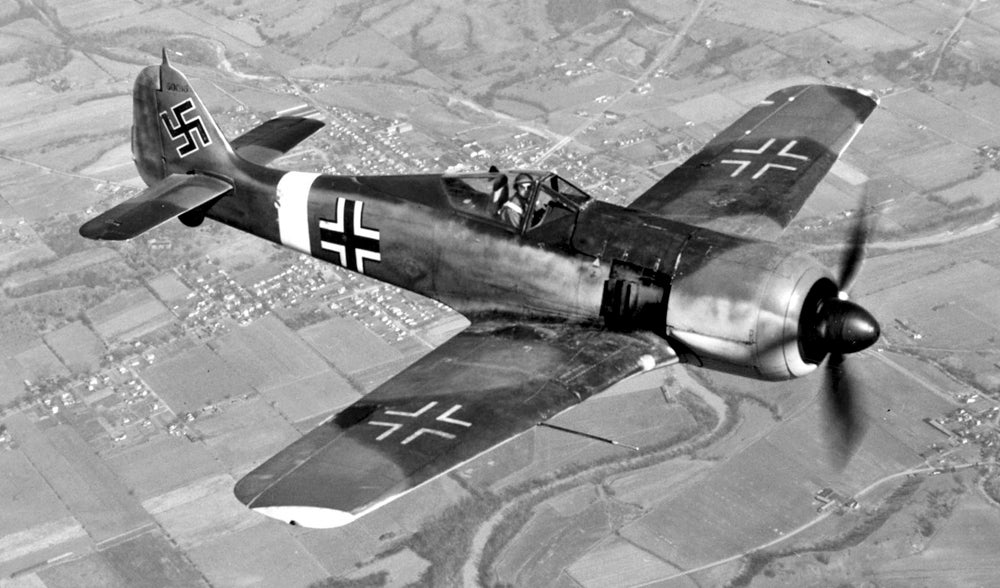
June 1, 1939 – The first flight of the Focke-Wulf Fw 190. Though WWI ended in 1918, the formal end of hostilities between Germany and the Allied Powers didn’t take place until the signing of the Treaty of Versailles on June 28, 1919. The treaty was particularly harsh on Germany, and one of the provisions forbade the manufacture or stockpile of chemical weapons, armored vehicles, tanks and military aircraft. But with the rise to power of Adolf Hitler in 1934, the German Reichsluftfahrtministerium (Ministry of Aviation) ignored the provisions of the treaty and began work to develop new military aircraft in an effort to create a new air force, the Luftwaffe. In the mid-1930s, the Ministry held a competition to develop a new single-engine fighter, a competition that was eventually won by the Messerschmitt Bf 109 . The 109 went on to become second-most highly produced warplanes in history behind the Ilyushin Il-2 Sturmovik , but even as the 109 entered development and production, the Ministry indicated that it wanted a second fighter to complement the 109, since it was feared that, as good as the 109 was at the time, future foreign designs might soon outclass it. Kurt Tank , the head of the design department at Focke-Wulf , took on the task of designing the new fighter. But unlike most German fighter aircraft of its era that used inline engines, Tank chose the 14-cylinder twin-row BMW 801 radial engine. Conventional wisdom in Europe at that time was that radial engines were too bulky for fighters, and that the size of the flat disk at the front of the plane would create too much drag and slow the fighter down. But Tank had seen the success of American radial-engined aircraft and, based on that experience, he chose the radial not only for its power but for its relative ease of maintenance. As it turned out, pilots also appreciated that huge hunk of metal at the front of the fighter, as it afforded an extra measure of protection while attacking Allied bomber formations. Tank also sought to make the new fighter as rugged and simple as possible so that it could operate from rough, undeveloped airstrips and could be easily maintained in the field. To counter the problems that often arose from stretched cables that worked the control surfaces, Tank instead used a series of solid linkages that provided excellent control and longevity. To keep the large radial engine cool, Tank initially fitted a vented spinner that covered the entire engine, with cooling air introduced through a hole in the center of the spinner. This was eventually abandoned in favor of a more conventional spinner and a NACA cowling over the engine that accelerated air flow over the hot cylinders.
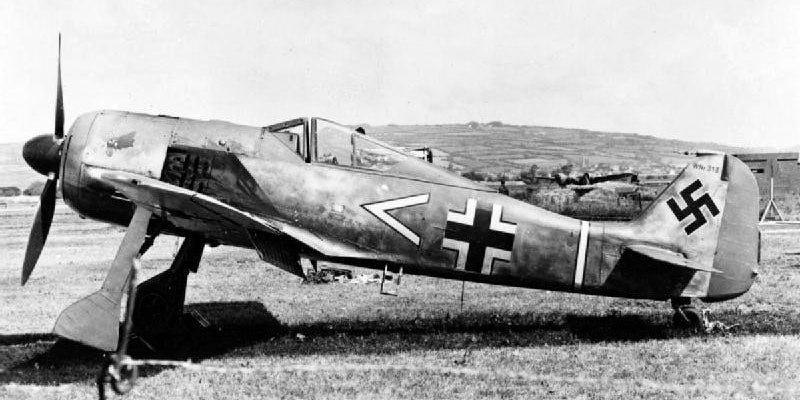
The Würger (shrike), as the Fw 190 was known, entered service with the Luftwaffe over the Western Front in August 1941. At first, Allied pilots were confused by the sight of the new fighter, as they had never encountered a radial-engined German fighter before. But the 190 soon got their attention, as it proved superior to the British Supermarine Spitfire Mk. V in all regimes of flight except for turning radius. And with superior firepower coming from its two 13mm MG 131 machine guns and two 20mm MG 151 cannons , the 190 soon clawed its way into air superiority over the British. It wasn’t until the RAF captured a 190 that they could analyze it and develop a version of the Spitfire, the Mk. IX, to deal with it. Over the Eastern Front, Würger pilots scored huge victories over less experienced Russian pilots, with German ace Otto Kittel claiming 267 victories, many of them coming at the controls of a 190. As Allied advances in fighter design continued, Focke-Wulf worked to stay ahead of, or at least on par with, Allied fighters. The D model was fitted with a Junkers Jumo 213 V-12 engine in an effort to increase high-altitude performance, and though it proved a match for the most modern Allied designs, it came too late in the war to affect its outcome. Despite attempts by Allied strategic bombers to eliminate German aircraft factories, production of the 190 continued throughout the war. Production of the 190 ceased in 1945 with the end of WWII, but by that time over 20,000 of all types were built. Despite that huge number, only one original Fw 190A owned by the Flying Heritage Collection in Everett, Washington exists, complete with its original BMW 801 engine. They also own the sole existing Fw 190D to have survived the war. (US Air Force photo; Imperial War Museum photo)
!!! UNKNOWN CONTENT TYPE !!!
!!! UNKNOWN CONTENT TYPE !!!
!!! UNKNOWN CONTENT TYPE !!!
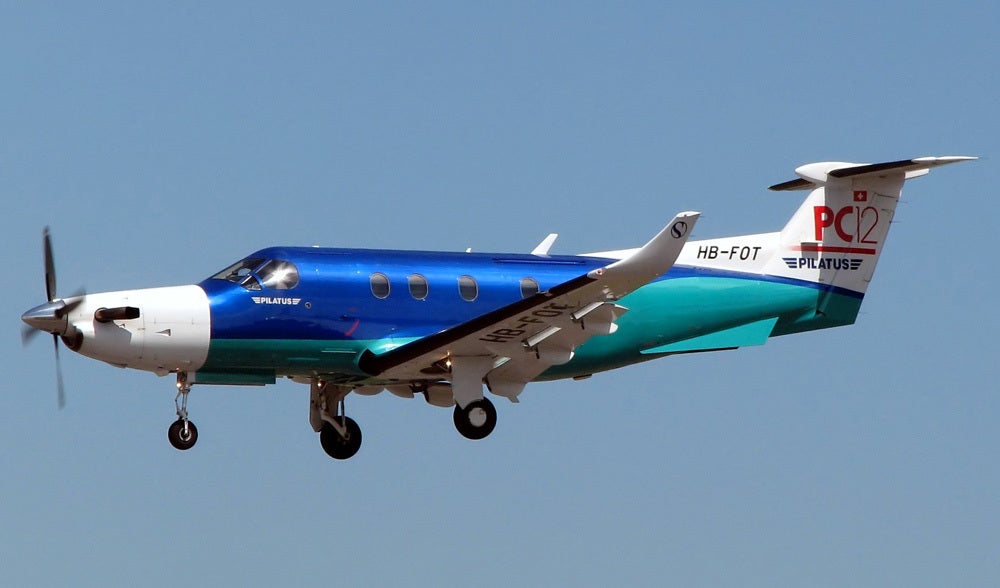
May 31, 1991 – The first flight of the Pilatus PC-12,
a turboprop passenger and cargo aircraft designed primarily for corporate use and regional airlines. The PC-12 is powered by a single
Pratt & Whitney Canada PT6
turboprop that provides a cruising speed of 312 mph and a range of over 1,700 miles with a full complement of 9 passengers. The PC-12 has proven to be a tremendous success, and is the best selling pressurized single-turbine aircraft in the world with over 1,300 hundred built, and the aircraft remains in production. The bulk of sales have been to the civilian market, though the PC-12 does serve government agencies and militaries around the world, including the US Air Force, where it is known as the U-28A.
(Photo via
Wikimedia Commons
)
!!! UNKNOWN CONTENT TYPE !!!

June 1, 2009 – The crash of Air France Flight 447,
a regularly scheduled flight from Rio de Janeiro to Paris. The
Airbus A330
(F-GZCP) took off on schedule and, due to the length of the flight, there were three pilots—one captain and two first officers—who would take shifts in the cockpit. With the captain out of the cockpit, the plane encountered icing conditions which led to the auto-pilot and auto-thrust being automatically deactivated. The pilot in command initiated rolling maneuvers, and an eventual unnecessary pitch up, which continued until the aircraft stalled and fell into the Atlantic Ocean. The final report cited inconsistent speed readings from iced pitot tubes, failure of the crew to recognize the attitude of the airplane or follow proper procedures for loss of auto-pilot, and lack of practical training for manual high altitude flight.
(Photo by Pawel Kierzkowski via
Wikimedia Commons
)
!!! UNKNOWN CONTENT TYPE !!!
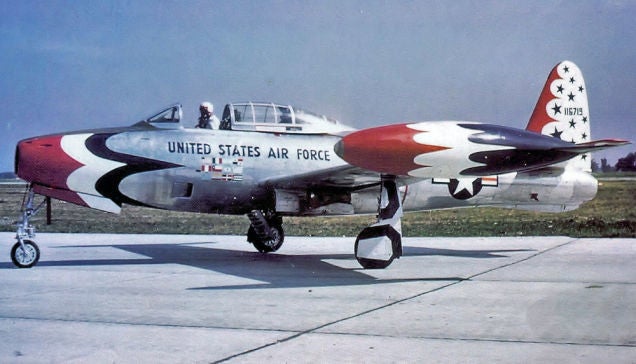
June 1, 1953 – The US Air Force Thunderbirds demonstration team is activated.
The Thunderbirds trace their lineage back to the first Air Force demonstration squadron, the Acrojets, who flew the
Lockheed F-80 Shooting Star
and was based at the USAF Fighter School at Williams AFB in Arizona. The Acrojets were disbanded in 1950 with the onset of the Korean War. At about the same time, another demonstration team, the Skyblazers, entertained crowds in Europe from their base at Fürstenfeldbruck Air Base in Germany. Two members of the Skyblazers went on to form the nucleus of the Thunderbirds, which was formed in 1953 as the 3600th Air Demonstration Team at Luke AFB in Arizona. The team takes its name from a legendary bird found in native North American mythology, and the current livery reflects traditional Native American imagery of the Thunderbird. The Thunderbird’s first aircraft was the
Republic F-84G Thunderjet
, and they have since transitioned through most frontline USAF fighters, and currently perform in the
General Dynamics F-16 Fighting Falcon
.
(US Air Force photo)
!!! UNKNOWN CONTENT TYPE !!!
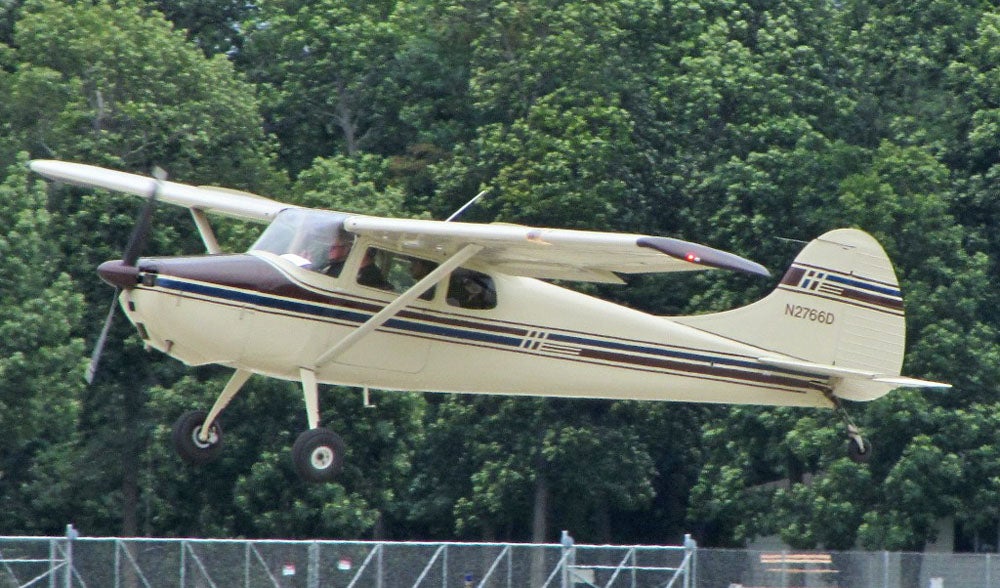
June 1, 1948 – The first flight of the Cessna 170, a single-engine general aviation aircraft that was produced by the Cessna Aircraft Company from 1948-1956. Beginning with the four-seat 170, an enlarged version of the popular Cessna 140, the diminutive aircraft was powered by a Continental C145 and featured a high wing and V struts. Development continued into the 1950s with the 305, which was modified with tandem seating and was flown extensively by the US Air Force, Army and Marines where it was known as the O-1 Bird Dog and used for reconnaissance and forward air control. It was later developed into the Cessna 172 , which featured a tricycle landing gear and became history’s most successful aircraft. A total of 5,174 170s were built. (Photo by FlugKerl2 via Wikimedia Commons )
!!! UNKNOWN CONTENT TYPE !!!
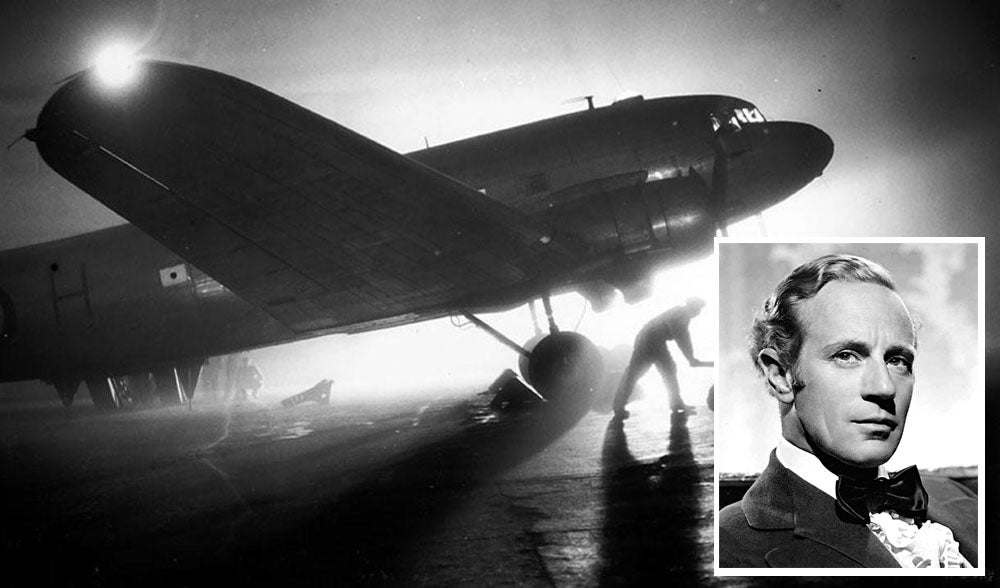
June 1, 1943 – British actor Leslie Howard is killed when his plane is shot down over the Bay of Biscay. Best known to American audiences for his role as Ashley Wilkes in the epic film Gone with the Wind (1939), Howard was a passenger on KLM/BOAC Flight 777 from Bristol, UK to Lisbon, Portugal flown by a camouflaged Douglas DC-3 (G-AGBB). During the nighttime flight, Howard’s aircraft was attacked by a flight of Junkers Ju 88Cs that were on patrol over the bay, and the same DC-3 had been attacked twice before but escaped. One theory for the attack is that German intelligence officers believed that Winston Churchill was on the flight, and the airliner was attacked in an attempt to assassinate the British prime minister. Along with Howard, four KLM flight crew were killed, as well as 12 passengers, many of them British business executives or low-level government employees, plus with 2 or 3 children. (Howard photo public domain; DC-3 photo by Getty via BBC )
!!! UNKNOWN CONTENT TYPE !!!

June 2, 1998 – The launch of Space Shuttle Discovery on the final Shuttle mission to the Russian Mir space station. Beginning in 1994, the Shuttle-Mir Program was a joint effort between NASA and the Russian Federal Space Agency (Roskosmos) in which Russian cosmonauts flew to Mir on the Space Shuttle, while American astronauts flew abroad Soyuz spacecraft. The goal of the program was to help the Americans gain experience on long-duration spaceflights in preparation for the transition to the International Space Station (ISS). A total of 11 Space Shuttle missions were flown to Mir and, with the transfer of astronaut Andy Thomas to Discovery , it marked a total of 907 days in space logged by 7 different astronauts. Discovery returned to Kennedy Space Center in Florida on June 12. (NASA photo)
!!! UNKNOWN CONTENT TYPE !!!
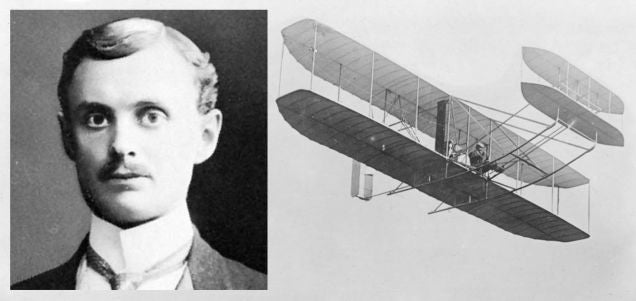
June 2, 1910 – Charles Rolls becomes the first man to make a non-stop, double crossing of the English Channel.
Charles Rolls is best known to aviation and automotive history as one half of the famed Rolls-Royce engine manufacturing company, which he formed with
Henry Royce
in 1906. But Rolls was also a pioneering aviator, first in ballooning then in airplanes, when he purchased of a
Wright Flyer Model A
in 1909. While not the first to cross the English Channel, Rolls was the first to make the trip across and then immediately back again, also becoming the first to cross the Channel flying eastward. For the feat, Rolls received the Gold Medal of the
Royal Aero Club
. Sadly, Rolls would achieve another, more infamous first, when he became the first Briton to die in an airplane accident following the crash of his Wright Flyer in 1910.
(Rolls photo author unknown; Wright Flyer photo via US Army)
!!! UNKNOWN CONTENT TYPE !!!
!!! UNKNOWN CONTENT TYPE !!!
!!! UNKNOWN CONTENT TYPE !!!
!!! UNKNOWN CONTENT TYPE !!!
!!! UNKNOWN CONTENT TYPE !!!
!!! UNKNOWN CONTENT TYPE !!!
!!! UNKNOWN CONTENT TYPE !!!
If you enjoy these Aviation History posts, please let me know in the comments. And if you missed any of the past articles, you can find them all at Planelopnik History . You can also find more stories about aviation and aviators at Wingspan and Planes You’ve (Probably) Never Heard Of .
!!! UNKNOWN CONTENT TYPE !!!
 "facw" (facw)
"facw" (facw)
06/02/2017 at 00:40, STARS: 2
Ooh, early aviation history.
 "MrDakka" (mrdakka)
"MrDakka" (mrdakka)
06/02/2017 at 00:49, STARS: 0
Those early aviators were pretty damn ballsy in their open air “cockpits”. I mean the Wright Flyer didn’t even have ailerons!
 "Urambo Tauro" (urambotauro)
"Urambo Tauro" (urambotauro)
06/02/2017 at 12:41, STARS: 2
Speaking of Thunderbirds, that reminds me: it was one year ago today that these two crashes took place: A
Blue Angel
and a
Thunderbird
.
I thought that was so weird that they happened on the same day. And if I’m getting the time zones right, they even happened within an hour of each other!
 "OPPOsaurus WRX" (opposaurus)
"OPPOsaurus WRX" (opposaurus)
06/02/2017 at 12:42, STARS: 1

on this date in this date in aviation history, aviation history goes through the Bermuda Triangle and goes through again for a double post.

06/02/2017 at 13:11, STARS: 0

 "ttyymmnn" (ttyymmnn)
"ttyymmnn" (ttyymmnn)
06/02/2017 at 13:15, STARS: 1
Not sure what happened. Well, I know what happened, just not why . Well, I know why , but I thought I had fixed it.
 "ttyymmnn" (ttyymmnn)
"ttyymmnn" (ttyymmnn)
06/02/2017 at 13:17, STARS: 1
That’s one of those tidbits that would have been good here. But it’s hard to keep up with the more recent history.
 "Urambo Tauro" (urambotauro)
"Urambo Tauro" (urambotauro)
06/02/2017 at 13:59, STARS: 0
Hm. Kinja lets us comment on drafts, right? I saw this sitting in the drafts folder, maybe I should have commented before it published, so that you’d have had a heads up.
 "Enginerrrrrrrrr" (Enginerrrrrrrrr)
"Enginerrrrrrrrr" (Enginerrrrrrrrr)
06/02/2017 at 14:33, STARS: 0
Love the Focke Wulf. Probably my favorite axis aircraft of WW2. As you mentioned, the later versions were serious beasts.